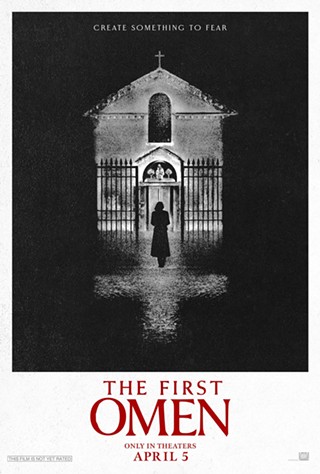An iconoclast, the closest Glover has come to playing a conventional character is perhaps when George McFly, the protagonist's father in Back to the Future, stands up to his nemesis Biff in the past, which results in the future George McFly being a happy, well-adjusted, tennis-playing, best-selling author. But Glover's predilection is playing offbeat, weird characters, and for good reason: He's an offbeat, weird sort of guy.
Despite a reputation for weirdness that was burnished in the public mind by a misbegotten 1987 appearance on Late Night With David Letterman, Glover is a remarkably personable and friendly chap. The Weekly's Jim Nintzel and I learned this last week as we interviewed him over a hot fish dinner at Kingfisher (thanks, Tucson Weekly expense report!).
After nearly a decade of sporadic work, Glover recently completed his first feature film, What Is It?, a fascinating, occasionally grotesque exploration of, er, something (according to press materials, it's "the adventures of a young man whose principal interests are snails, salt, a pipe, and how to get home, as tormented by a hubristic racist inner psyche"). What Is It? is part of a trilogy, the second part of which is already complete, and it tells the story of "the young man" and his various alter egos and the characters that populate his inner and outer sancta.
What's perhaps most intriguing about What Is It? is that almost all of the actors have Down syndrome, and in the case of Steve Stewart, an actor around whom the second film in the trilogy is based, severe muscular dystrophy.
"When you're in acting class, often what a lot of the exercises are about is to help you not be conscious of yourself, to get out of your own self. And I feel that people with Down syndrome often do not have a learned social masking," Glover says. "I've always felt that would be something interesting for the camera. But even more than that, when I look at somebody's face that has Down syndrome, and I think most people have a similar kind of reaction, I see that there's a history written in their face of somebody that's lived outside of culture."
It's clear from watching the film that Glover's intent was not to exploit any of the performers for freak value. Strange though What Is It? may be, the film does a remarkable job of humanizing people afflicted with the sorts of handicaps that cause society to treat them as "other." In particular, the real-life romance between two of the actors is depicted in the film between the characters they play. The effect is somewhat unsettling at first, before it becomes extremely touching. As Glover notes, "Most people with Down syndrome are basically never represented as romantic or sexual, because that falls into an area that can make people uncomfortable. And therefore, it's a truth; it's a reality, but it's not allowed to be said."
In response to some of the criticism directed toward some of the more transgressive elements of his film (Nazi imagery, the Johnny Rebel song "Some Niggers Never Die," the handjob given to Steve Stewart's character by an ape-masked nude woman, the salting of snails), Glover is circumspect. "There's a book by Friedrich Nietzsche called Beyond Good and Evil, and I haven't read that book, and I want to read it because I've been talking about it frequently, but just that title, I've thought about a lot, and it applies a lot. If you think about it, all societies have a moral structure, and within that, that which is considered good for the society is called good, and that which is considered bad for the society is called evil, and what one culture might consider good, another culture might consider evil. And it becomes very apparent when you look at that construct of 'good' and 'evil,' that it's a construct, a concept that's something that helps to keep people in a kind of constraint of what one should and shouldn't do. And what's happening right now in all media, basically, is that corporations will not let anything pass that examines anything in that space beyond good and evil."
Glover is attempting to exhibit his film in a novel way--his plan is to take it to as many art houses as he can across the United States in person, coupling screenings of the film with Q&A sessions, his "Big Slide Show" of his books and other works, and book-signings. "I'm looking to go outside the corporate entities," he says. "The distributors will show a film on an art house run, and it will be a loss-leader advertisement for the inevitable DVD. But I don't want my film to be seen except on the big screen, at least right now."
He's been getting a lot of support from nonprofits like the Tucson Cinema Foundation, the operator of the Loft. If all goes according to plan, Glover will be able to put What Is It? in the black, which is unheard of for a film of its scale and with its subject matter. Having invested a couple hundred thousand dollars of his own money into his film, it's a personal imperative that he makes it back.
"I'm pretty confident, though, when I look at the numbers, that I'll be able to do so," he says.










